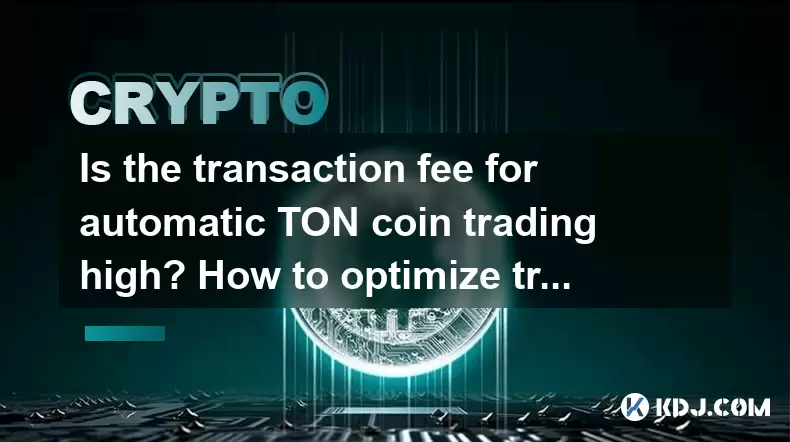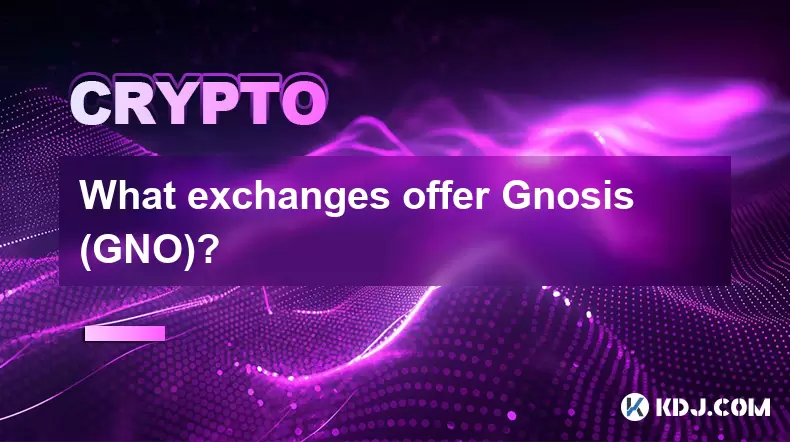-
 Bitcoin
Bitcoin $118600
-2.59% -
 Ethereum
Ethereum $4282
-0.42% -
 XRP
XRP $3.129
-4.21% -
 Tether USDt
Tether USDt $0.0000
0.01% -
 BNB
BNB $805.4
-1.80% -
 Solana
Solana $174.3
-5.77% -
 USDC
USDC $0.9998
-0.01% -
 Dogecoin
Dogecoin $0.2230
-6.33% -
 TRON
TRON $0.3466
1.70% -
 Cardano
Cardano $0.7745
-5.73% -
 Chainlink
Chainlink $21.37
-3.53% -
 Hyperliquid
Hyperliquid $42.93
-7.25% -
 Stellar
Stellar $0.4324
-4.94% -
 Sui
Sui $3.660
-7.17% -
 Bitcoin Cash
Bitcoin Cash $591.6
2.72% -
 Hedera
Hedera $0.2467
-7.04% -
 Ethena USDe
Ethena USDe $1.001
0.00% -
 Avalanche
Avalanche $22.92
-6.14% -
 Litecoin
Litecoin $118.8
-3.79% -
 Toncoin
Toncoin $3.378
-0.46% -
 UNUS SED LEO
UNUS SED LEO $9.011
-1.15% -
 Shiba Inu
Shiba Inu $0.00001294
-5.81% -
 Uniswap
Uniswap $11.24
0.53% -
 Polkadot
Polkadot $3.870
-6.16% -
 Cronos
Cronos $0.1662
-1.68% -
 Dai
Dai $1.000
0.02% -
 Ethena
Ethena $0.7915
-5.62% -
 Bitget Token
Bitget Token $4.414
-1.65% -
 Monero
Monero $259.3
-3.85% -
 Pepe
Pepe $0.00001120
-8.29%
Is the transaction fee for automatic TON coin trading high? How to optimize transaction costs?
TON coin transaction fees vary by network congestion, transaction size, and platform; optimize by choosing the right platform, using discounts, and adjusting bot settings.
May 20, 2025 at 12:35 pm

The transaction fee for automatic TON coin trading can vary based on several factors, including the trading platform, the volume of transactions, and the network congestion at the time of trading. Understanding these fees and learning how to optimize them is crucial for traders looking to maximize their profits. In this article, we will delve into the specifics of TON coin transaction fees and provide detailed strategies for optimizing these costs.
Understanding TON Coin Transaction Fees
TON coin, also known as The Open Network coin, operates on a blockchain that aims to provide fast and secure transactions. The transaction fees associated with TON coin trading are influenced by the following factors:
- Network Congestion: When the TON network is busy, transaction fees can increase due to higher demand for processing transactions.
- Transaction Size: Larger transactions, in terms of data size, can incur higher fees.
- Trading Platform: Different platforms may have varying fee structures for trading TON coins.
To get a better understanding of the fees, let's look at an example. Suppose you are using a popular exchange like Binance to trade TON coins. Binance charges a maker fee of 0.1% and a taker fee of 0.1% for most trading pairs. However, these fees can be reduced if you hold Binance Coin (BNB) or if you are a high-volume trader.
Factors Affecting Automatic Trading Fees
Automatic trading, often facilitated by trading bots, can lead to higher transaction fees due to the frequency and volume of trades. Here are some key factors that affect these fees:
- Frequency of Trades: Bots that execute trades more frequently will incur more transaction fees.
- Trade Volume: Larger trade volumes can lead to higher fees, although some platforms offer discounts for high-volume traders.
- Bot Configuration: The settings of your trading bot, such as the size of each trade and the timing of trades, can impact the total fees you pay.
For instance, if your bot is set to execute a trade every 15 minutes, and each trade incurs a fee of 0.1%, the cumulative effect over a day can be significant. Therefore, understanding and optimizing these settings is crucial.
Strategies to Optimize Transaction Costs
Optimizing transaction costs involves a combination of choosing the right platform, adjusting your trading strategy, and leveraging available discounts. Here are some effective strategies:
- Choose the Right Platform: Select a trading platform that offers competitive fees. For example, some platforms like KuCoin offer lower fees for certain trading pairs.
- Use Fee Discounts: Many exchanges provide fee discounts if you hold their native tokens. For instance, holding BNB on Binance can reduce your trading fees by up to 25%.
- Adjust Bot Settings: Fine-tune your trading bot to execute trades less frequently or in larger volumes to reduce the cumulative effect of fees.
- Batch Transactions: If possible, batch multiple transactions into a single one to reduce the number of fees you pay.
Let's go through the steps to adjust your bot settings for optimizing fees:
- Access Bot Settings: Log into your trading bot platform and navigate to the settings section.
- Adjust Trade Frequency: Reduce the frequency of trades. For example, change from every 15 minutes to every hour.
- Modify Trade Size: Increase the size of each trade to reduce the number of transactions.
- Review and Save: Review your changes and save the new settings.
Comparing Transaction Fees Across Platforms
Different platforms have different fee structures, and comparing them can help you find the most cost-effective option for trading TON coins. Here's a comparison of some popular platforms:
- Binance: Offers a 0.1% fee for both maker and taker orders, with a 25% discount if you hold BNB.
- KuCoin: Charges a 0.1% fee for makers and 0.1% for takers, with a 20% discount if you hold KuCoin Shares (KCS).
- Huobi: Has a 0.2% fee for both maker and taker orders, with a 50% discount if you hold Huobi Token (HT).
By comparing these platforms, you can see that Binance and KuCoin offer similar base fees, but the discount structures differ. Choosing the right platform based on your trading volume and the tokens you hold can significantly impact your transaction costs.
Practical Example of Fee Optimization
To illustrate how these strategies can be applied, let's consider a practical example. Suppose you are trading TON coins on Binance and using a trading bot. Here's how you can optimize your fees:
- Hold BNB: By holding BNB, you can reduce your trading fees by 25%. If you trade $10,000 worth of TON coins daily, the fee without BNB would be $10 (0.1% of $10,000). With BNB, the fee drops to $7.50.
- Adjust Bot Settings: Change your bot to execute trades every hour instead of every 15 minutes. This reduces the number of transactions from 96 to 24 per day, significantly lowering the cumulative fees.
- Batch Transactions: If your bot can batch multiple small trades into one larger trade, you can further reduce the number of transactions and thus the fees.
By implementing these strategies, you can see a substantial reduction in your transaction costs, making your trading more profitable.
Frequently Asked Questions
Q: Can I use multiple trading bots to optimize my TON coin trading fees?
A: Using multiple trading bots can potentially help optimize fees by allowing you to distribute your trades across different platforms with varying fee structures. However, managing multiple bots can be complex and may require significant oversight to ensure they are working efficiently.
Q: Are there any tools or software that can help me track and optimize my TON coin trading fees?
A: Yes, there are several tools and software available that can help you track and optimize your trading fees. Platforms like Coinigy and Cryptohopper offer features that allow you to monitor your fees and adjust your trading strategies accordingly.
Q: How do I know if my trading bot is configured correctly to minimize fees?
A: To ensure your trading bot is configured correctly, regularly review its performance and fee reports. Most trading bot platforms provide detailed logs and analytics that can help you identify if your settings are optimal. Adjust the settings based on these insights to minimize fees.
Q: Can I negotiate trading fees with cryptocurrency exchanges?
A: Some exchanges offer fee negotiation for high-volume traders or institutional clients. It's worth reaching out to the exchange's customer support to inquire about potential fee reductions based on your trading volume or other factors.
Disclaimer:info@kdj.com
The information provided is not trading advice. kdj.com does not assume any responsibility for any investments made based on the information provided in this article. Cryptocurrencies are highly volatile and it is highly recommended that you invest with caution after thorough research!
If you believe that the content used on this website infringes your copyright, please contact us immediately (info@kdj.com) and we will delete it promptly.
- Dogecoin, Presale, Surge: Riding the Meme Coin Wave
- 2025-08-12 11:10:12
- Dogecoin, Tron, and the ROI Reality Check: What's a Crypto Investor to Do?
- 2025-08-12 11:15:12
- Ethereum Layer-2 Scaling Competition Heats Up as ETH Breaks $4K
- 2025-08-12 10:30:12
- China Regulation, Stablecoins, and BNB Presale: Navigating the Crypto Landscape
- 2025-08-12 11:30:12
- Meme Coins, Investment, and Token Burns: What's Hot in 2025?
- 2025-08-12 10:30:12
- China's National Security Alarm Bells Ring Over Worldcoin's Iris Scans
- 2025-08-12 11:35:12
Related knowledge

How to purchase Aragon (ANT)?
Aug 09,2025 at 11:56pm
Understanding Aragon (ANT) and Its PurposeAragon (ANT) is a decentralized governance token that powers the Aragon Network, a platform built on the Eth...

Where to trade Band Protocol (BAND)?
Aug 10,2025 at 11:36pm
Understanding the Role of Private Keys in Cryptocurrency WalletsIn the world of cryptocurrency, a private key is one of the most critical components o...

What is the most secure way to buy Ocean Protocol (OCEAN)?
Aug 10,2025 at 01:01pm
Understanding Ocean Protocol (OCEAN) and Its EcosystemOcean Protocol (OCEAN) is a decentralized data exchange platform built on blockchain technology,...

Where can I buy UMA (UMA)?
Aug 07,2025 at 06:42pm
Understanding UMA and Its Role in Decentralized FinanceUMA (Universal Market Access) is an Ethereum-based decentralized finance (DeFi) protocol design...

What exchanges offer Gnosis (GNO)?
Aug 12,2025 at 12:42pm
Overview of Gnosis (GNO) and Its Role in the Crypto EcosystemGnosis (GNO) is a decentralized prediction market platform built on the Ethereum blockcha...

How to buy Storj (STORJ) tokens?
Aug 09,2025 at 07:28am
Understanding Storj (STORJ) and Its Role in Decentralized StorageStorj is a decentralized cloud storage platform that leverages blockchain technology ...

How to purchase Aragon (ANT)?
Aug 09,2025 at 11:56pm
Understanding Aragon (ANT) and Its PurposeAragon (ANT) is a decentralized governance token that powers the Aragon Network, a platform built on the Eth...

Where to trade Band Protocol (BAND)?
Aug 10,2025 at 11:36pm
Understanding the Role of Private Keys in Cryptocurrency WalletsIn the world of cryptocurrency, a private key is one of the most critical components o...

What is the most secure way to buy Ocean Protocol (OCEAN)?
Aug 10,2025 at 01:01pm
Understanding Ocean Protocol (OCEAN) and Its EcosystemOcean Protocol (OCEAN) is a decentralized data exchange platform built on blockchain technology,...

Where can I buy UMA (UMA)?
Aug 07,2025 at 06:42pm
Understanding UMA and Its Role in Decentralized FinanceUMA (Universal Market Access) is an Ethereum-based decentralized finance (DeFi) protocol design...

What exchanges offer Gnosis (GNO)?
Aug 12,2025 at 12:42pm
Overview of Gnosis (GNO) and Its Role in the Crypto EcosystemGnosis (GNO) is a decentralized prediction market platform built on the Ethereum blockcha...

How to buy Storj (STORJ) tokens?
Aug 09,2025 at 07:28am
Understanding Storj (STORJ) and Its Role in Decentralized StorageStorj is a decentralized cloud storage platform that leverages blockchain technology ...
See all articles

























































































